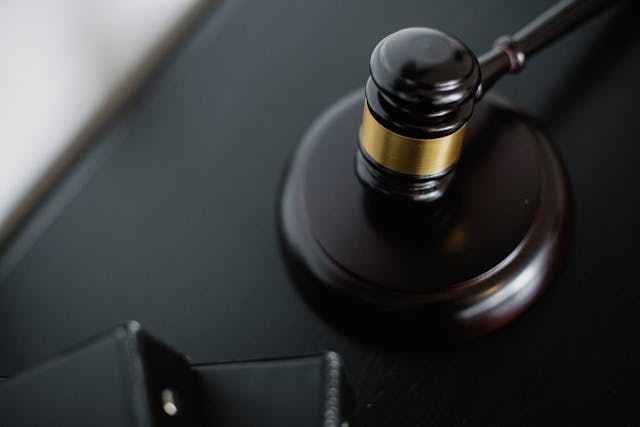Juvenile justice systems around the world are working hard to solve many tough problems. These systems are meant to help young people who break the law. But many people question how well they really work.
The topic of juvenile justice often creates debate, especially when we look at how kids from different backgrounds are treated.
Things like family income, race, and the community they grow up in can all affect a child’s experience with the justice system. To make the system better, it’s important to understand these factors and find solutions that truly help kids.
This article will talk about the problems youth face in the justice system and share ideas on how to prevent and deal with juvenile offences.
The Complexity of Youth Offending
Understanding juvenile justice requires an in-depth look at why youth offend. Juveniles were arrested, with a significant percentage facing charges such as
- theft
- drug offenses
- violent crimes
These numbers underscore the necessity for an effective system that addresses underlying issues rather than simply punitive measures. Factors such as family instability, peer pressure, mental health problems, and exposure to violence or crime significantly contribute to youth offending.
Socioeconomic and Environmental Factors
Kids from low-income families are more likely to get involved in crime, especially if they live in neighbourhoods where illegal activities seem normal. This can make it harder for them to make good choices.
To help, communities can create programs that give support and resources to kids who are at risk. These programs, along with the involvement of parents, schools, and local groups, can work together to guide kids and prevent crime.
Racial Disparities in Juvenile Justice
Racial bias is still a big problem in the juvenile justice system. Many minority kids, especially Black and Hispanic teens, are arrested and sent to jail more often than others. It’s important to understand this unfairness so we can find ways to make sure all kids are treated equally and given the same chances.
Addressing Racial Bias
Training programs can help police officers and justice workers understand how racial bias affects kids. This can reduce unfair treatment.
Communities can also push for new rules that make sure all kids are treated fairly, no matter their race or background. By working together, community leaders, advocacy groups, and the justice system can create fairer practices that help all young people.
Rehabilitation vs. Punishment
People often argue about whether the juvenile justice system should focus on punishment or helping kids change their behaviour. The old way usually puts kids in detention as punishment. But this often leads them to break the law again later.
On the other hand, kids who join rehabilitation programs are much less likely to get into trouble again compared to those who only get punished.
Effective Rehabilitation Programs
Good rehabilitation programs are very important to help kids make better choices in life. These programs should include learning, mental health support, and teaching new skills. Proven methods like counselling and therapy have shown that they can lower the chances of kids breaking the law again and help them build brighter futures.
Community-Based Solutions
Community-based juvenile justice focuses more on helping kids and preventing problems instead of just punishing them. Programs that give teens positive activities and mentors can lower crime and keep them on the right path. Things like youth courts, family meetings, and restorative justice bring the community together to solve conflicts while supporting both the victims and the kids who made mistakes.
Restorative Justice Models
Restorative justice is about helping people heal instead of just punishing them. It brings together the person who did wrong, the victim, and community members to talk about what happened and find a solution. This approach can help kids stay out of trouble in the future and make victims feel more supported.
Legal Representation and Its Importance
A significant challenge in juvenile justice is ensuring effective legal representation for young offenders. Many youth lack access to experienced legal counsel. This can lead to unfavourable outcomes.
Parents and guardians need to understand the value of hiring a qualified criminal defense attorney in Murrells Inlet to navigate the complex legal landscape.
The Role of Public Defenders
Public defenders usually handle many cases at the same time. This can make it hard to give each child the attention they need.
Providing more legal support for young people helps make sure they get a fair defense. This can prevent harsh punishments and help them understand their rights better.
The Role of Education
Education is very important for helping kids make better choices. Many young people in the justice system have had trouble in school. Schools that offer extra support, like tutoring, counselling, and different ways of learning, can help these students do better and have a brighter future.
Collaboration with Schools
Working together, schools and juvenile justice programs can spot kids who might be at risk early. By acting early, schools can help students deal with problems before they lead to trouble. Giving teachers the right tools to handle behaviour and offer emotional support can help students do much better in school and in life.
Public Awareness and Advocacy
Many people don’t know much about juvenile justice. This can lead to wrong ideas about why kids break the law. Getting the community involved can help everyone understand the reasons behind youth crime and the challenges these kids face.
Groups that speak up for young people are important because they teach the public and push for changes that focus on helping kids instead of just punishing them.
Call for Reforms
The challenges within juvenile justice are multifaceted. It necessitates comprehensive reforms that incorporate insights from various stakeholders
- youth
- families
- community organizations
- law enforcement
By prioritising rehabilitation, community engagement, and equitable treatment, we can create a system that truly serves the needs of young offenders while promoting safety and justice.
A Path Forward for Juvenile Justice
Juvenile justice is about how the law handles young people who get into trouble. To help them, we need to look at more than just punishment. Education, support from the community, and making sure everyone is treated fairly, no matter their background, are very important.
Having good legal help and working together with different groups also makes a big difference in guiding kids the right way. Moving forward, communities should work together to support changes that make the system fair and helpful for all youth.










